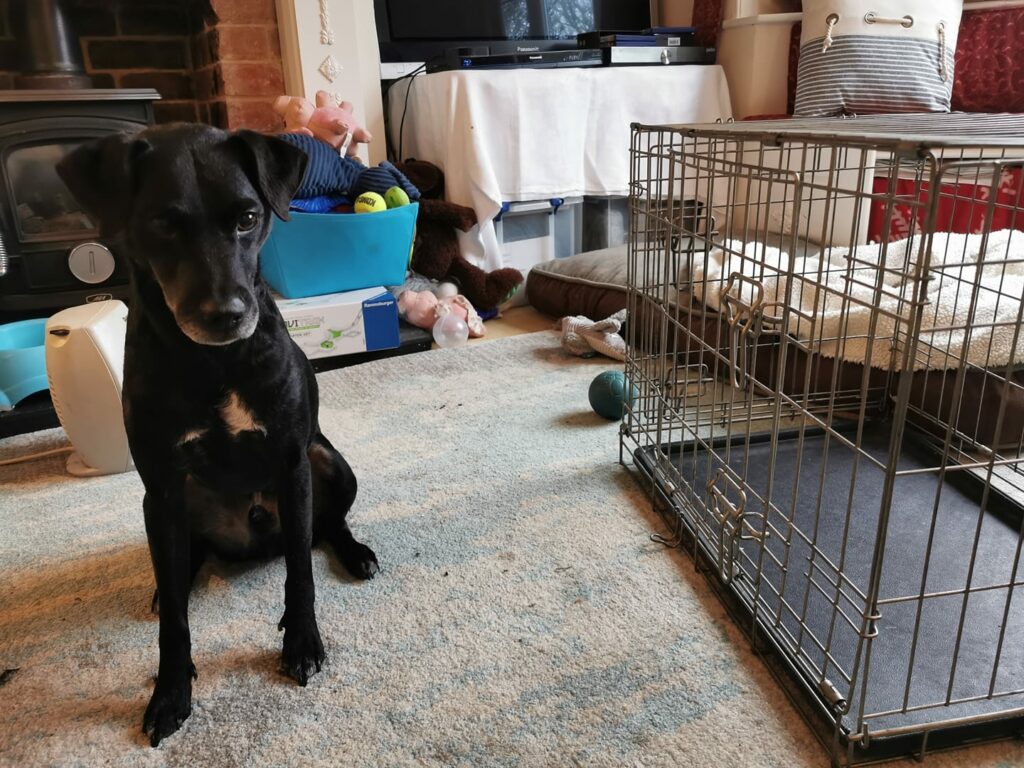When it comes to dogs who are worried about things in their environment, be it inanimate objects, other dogs or people, we need to change the dog’s feelings towards what concerns them. This requires counterconditioning, we want the scary stimulus to elicit neutral, or positive emotions upon sight of the scary thing, rather than icky feelings. There are a number of ways to achieve this, from the CARE method (learn more HERE), to BAT (learn more HERE), to click to calm (learn more HERE) and more, each of which are equally valid and effective. Other methods of changing these emotions can focus on operant conditioning (i.e., training your dog) in the presence of what makes them afraid, such as Leslie McDevitt’s Control Unleashed methods. This works because classical conditioning is always occurring even if we aren’t intentionally training for it, we can never escape it.

All of the above methods work because your dog knows the scary stimulus is there. This means that they need your dog to notice the scary stimulus. What behaviourists often hear when transferring these principles to clients is something along the lines of ‘Oh so it’s distraction techniques’, ‘So, we just distract Rover’. I appreciate that the principles may appear to be distracting your dog from the thing they’re concerned about, especially if you watch them in action and aren’t aware of the theory underpinning the practical work involved. However, the Oxford Languages dictionary defines distraction as ‘a thing that prevents someone from concentrating on something else’ and that’s really not what we want when working on a counterconditioning protocol.
Firstly, in order to achieve anything close to changing your dog’s emotional response to a scary thing, they need to know the scary thing is there! If we distract our dog from noticing a scary thing in the first place, then we aren’t counterconditioning. We want your dog to notice the scary thing so that we can then start to make them feel better about it.
Secondly, we aren’t aiming to distract the dog from the scary thing when we pair it with a good thing. If I’m working on the basic care protocol which is, at its simplest the process of your dog perceiving the scary thing (which could be with their eyes, ears or nose), feeding for the duration of time that the scary thing can be perceived (i.e., the whole time the scary thing is in sight, making noise or can be smelt. Scent is a little harder to work in this context and is another blog for another time), then removing the food after the scary thing can no longer be perceived. If I’m working with sight, I feed in a way that the dog can continue to look at the scary thing so that they pair the food with looking at the scary thing and how that scary thing moves or interacts with its environment. This is going to be far more effective and get me much more bang for my buck than feeding in a way where the dog can no longer look at the scary thing. Counterconditioning is all about pairing one stimulus (the scary thing) with another (the nice thing, typically food), the clearer we can make that pairing, the better.

Imagine you were being counterconditioned to your biggest fear. For me, that’s spiders. If someone presented a spider at one end of the room and fed me chocolate continuously until it left, allowing me to keep an eye on it at all times, then I’m more likely to feel safe and know that the spider is at a distance from me that I can tolerate. Whereas, if I had to turn away from the spider to receive the chocolate, I’m going to worry that the spider may be creeping closer than I want it to. It’s really hard to turn away from the thing you fear most in life, turning away from it is not something you would naturally choose to do.
If you’re working on a counterconditioning protocol, we want your dog to know the scary thing is there and be aware of it. Otherwise, we’re not working with your dog as effectively as we could be, and they aren’t learning that the scary thing is less scary.
It’s a normal response to try and distract your dog from what scares them. If they don’t know it’s there, they can’t feel scared! However, if they don’t know it’s there, they can’t be trained to be less afraid of it and that’s a vital part of changing your dog’s behaviour.
If you find yourself struggling with letting your dog acknowledge their trigger, ask your behaviourist for advice on what to do if your dog reacts. Often, we want to avoid our dog looking at what scares them because we ourselves fear the reaction our dog may have. There are things we can do to help our dogs when they react and knowing how to respond when it goes ‘wrong’ will help you feel more confident in getting everything ‘right’!
